German Police Long Blade Dress Bayonet by E. & F. Hörster
SKU: 52.GOR.04.04.01.01.004
Estimated market value:
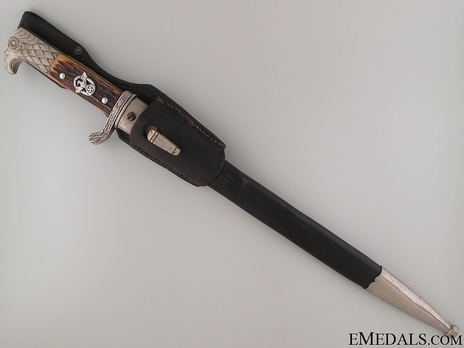
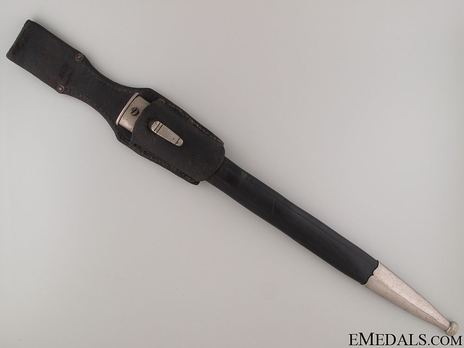
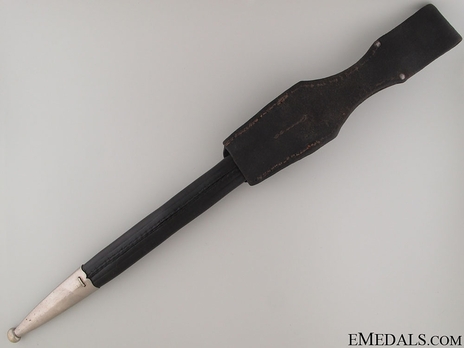
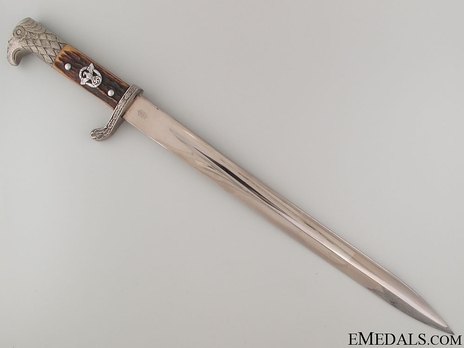
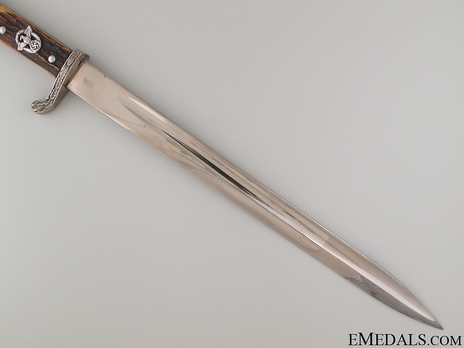
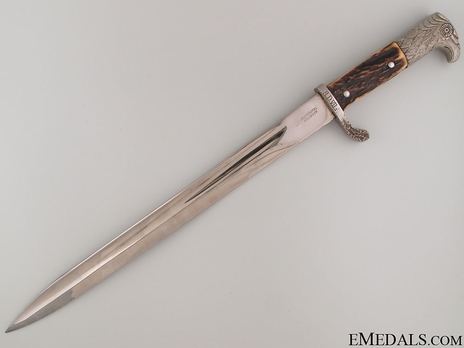
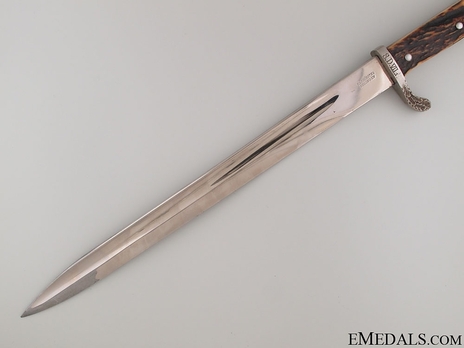
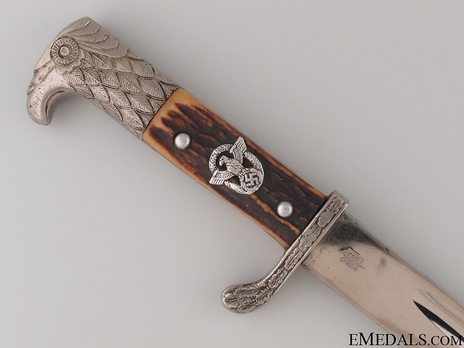
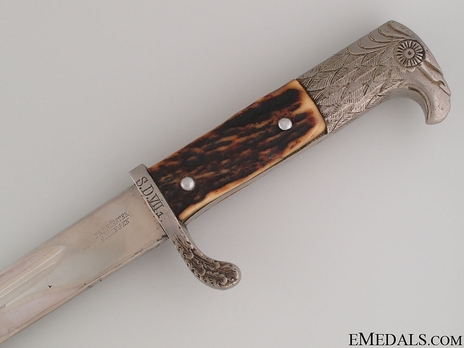
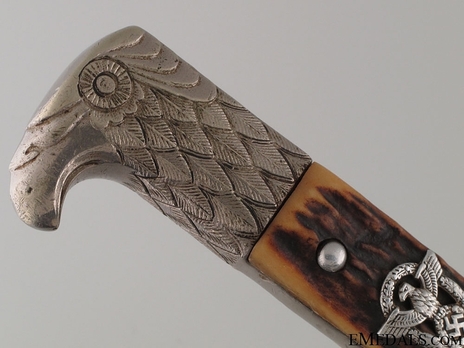
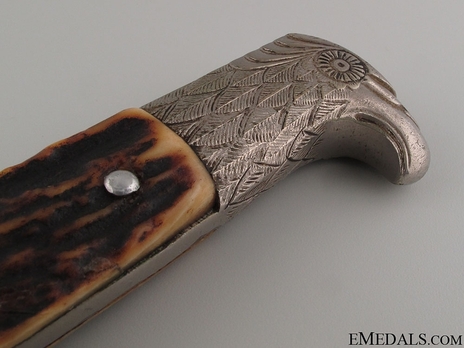
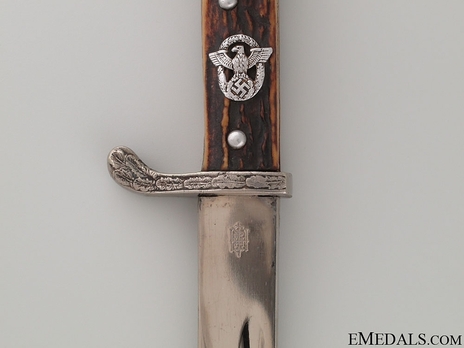
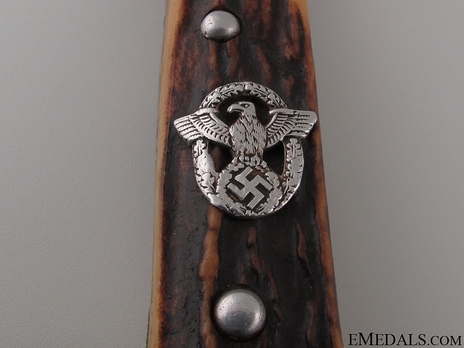
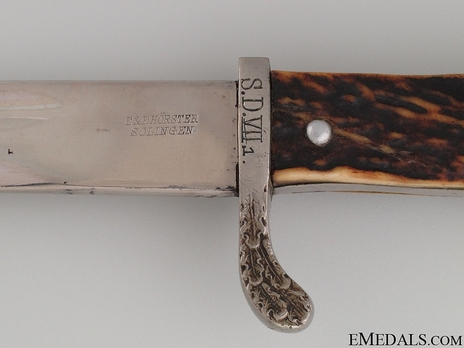
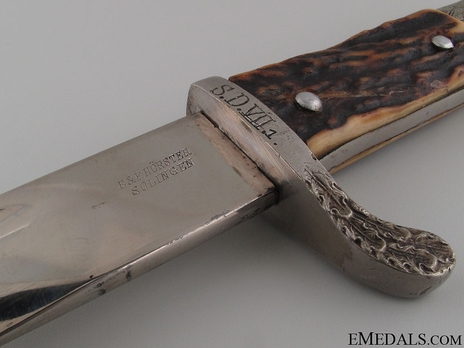
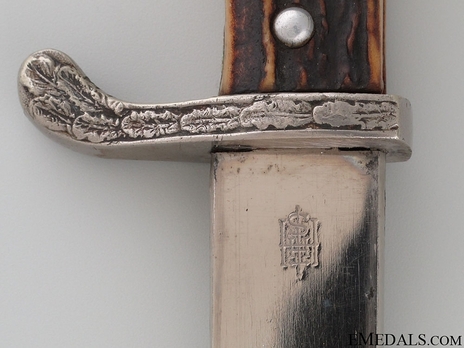
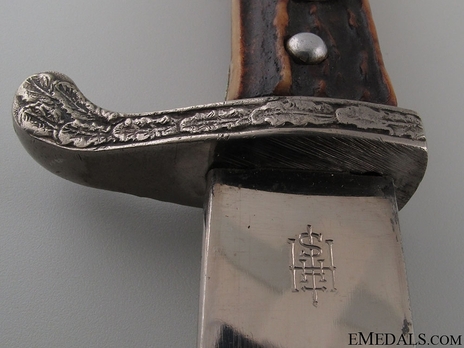
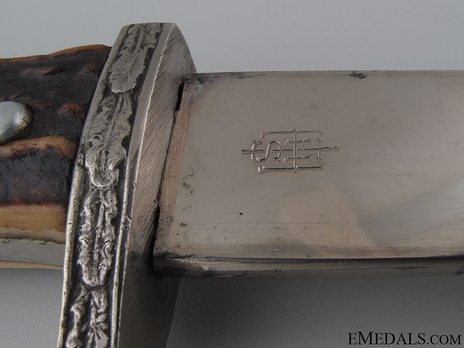

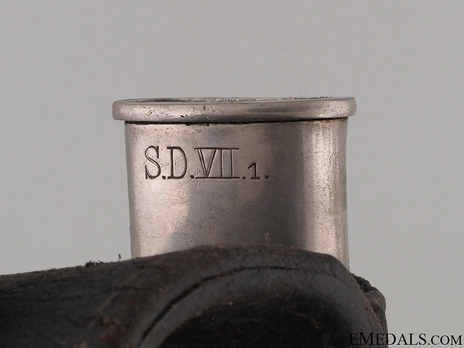
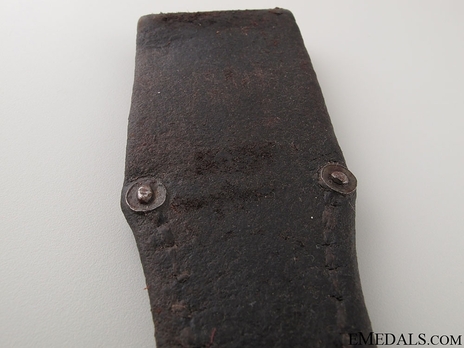
Estimated market value:
Attributes
History
During the Third Reich, an effort was made to unite all of Germany’s disparate provincial police forces and agencies into a single cohesive national unit. To attain this goal, Reichsführer-SS Heinrich Himmler was named Chief of the German Police in the Ministry of the Interior in June 1936. That same month, Himmler implemented new standardized uniforms, headgear, and insignia. The uniforms worn prior to Himmler’s appointment were often navy blue, particularly in what had been Prussia. The new uniforms were green, in a shade that was then dubbed “Police green”.
The German Police were divided into two main units, the Ordnungspolizei (Orps or Regular Police) and the Sicherheitspolizei (Secret Police); the Ordnungspolizei were unofficially called the green police (Grüne Polizei) as a result of their uniform colour. The Sicherheitspolizei were made up of two main organizations, the Gestapo and the Kriminalpolizei (Criminal Investigation Police). At the beginning of the Second World War, the Sicherheitspolizei were brought under the auspices of the Reich Main Security Office.
This bayonet was worn by German police Officers who were not permitted to wear the police sabre or sword, as part of their dress uniform from 1936 until the end of the Second World War. It was also known as a police dress bayonet.
Prior to 1936, the bayonets utilized by police personnel in Germany varied according to the wearer’s district. Standardized regulations were issued in June 1936. The new national design copied the form of the Prussian police bayonet. This made it possible to alter old Prussian police bayonets to fit the new German police bayonet regulations. Thus, the majority of German police bayonets used from 1936 to 1945 were refurbished Prussian police bayonets; this resulted in a lot of variation within the adherence to the new standards. Infrequently, completely new bayonets were also produced.
The bayonets were manufactured in affixable/slotted and non-affixable/un-slotted versions. The affixable versions had an additional press button and attachment devices in the eagle eyes on the pommel, allowing it to be attached to a rifle. There are rare examples of the German police bayonets that have a clamshell attached below the crossguard. The clamshell is a leftover design element from the Prussian police bayonets, and it was almost completely eliminated by 1938.
The handle of the bayonet is made up of the pommel, the grip, and the crossguard. The pommel and crossguard were generally manufactured from nickel-plated steel or aluminum, while the grip was made of staghorn or simulated staghorn. The pommel takes the form of a very detailed eagle head. The crossguard features an overlapping oak leaves design along the entire obverse surface, while the reverse surface only has oak leaves along the end of the crossguard arm (quillon) and a smooth surface in the centre where the police property mark and the unit mark may be placed. The grip is secured by two studs. The obverse grip features a silver-coloured (aluminum or white metal) German police eagle insignia.
These bayonets have nickel-plated steel blades. After the 1936 standardization, they were shortened from the Prussian police blade length of 410mm to the new German police blade length of 330mm. There were also extra-quality dress bayonets that had a shorter blade length of 250mm. The blades of extra-quality bayonets may have intricate designs and additional inscriptions etched onto the blades. The obverse and reverse of the blade ricasso generally feature manufacturer marks. The manufacturer’s logo/trademark may be featured on the obverse, while the full name and location of the manufacturer may be etched onto the reverse. The blade spine may also have a police property mark, or be stamped with additional numbers.
The scabbard is composed of leather and has two nickel-plated steel or aluminum fittings; the toe piece and the throat piece. Both fittings have scalloped edges. The toe piece has a ball finial at the bottom, and the throat piece reverse often has a police property mark or a unit mark. The scabbard leather is black for members of the national and municipal police, and brown for members of the rural police. The obverse of the scabbard features a stud to facilitate the attachment of the frog.
The frog is composed of black or brown leather and it attached to the wearer’s belt.
This bayonet may feature a variety of marks, including manufacturer marks, police property marks, and unit marks. When present, the manufacturer name and location are generally acid etched onto the reverse ricasso. The manufacturer’s trademark may also be featured on the obverse ricasso.
When the police property mark is present, it may be located on the reverse of the crossguard, the reverse of the scabbard throat piece, or the blade spine. There are two types of police property marks found on bayonets that were produced during the Weimar period and then refurbished for use in the German police prior to 1936.
The first property stamp type is a “P” or “Po.” stamped before the unit mark on the reverse of the crossguard and scabbard throat piece. The second police property mark type is a star/sunburst with a letter below it. This property mark is predominantly located on the blade spine. These two pre-1936 police property marks are generally not featured on the same blade, but due to the mix-matching of bayonets and scabbards during the refurbishing process, there may be a star property mark stamped on the blade spine, and the “P” or “Po.” mark on the reverse of the scabbard.
Post-1936, the police property marks on the spine adopted the form of an eagle with straight, spread wings and a letter below the eagle; common letters include B, D, E, F, K, and L.
When present, the unit mark is located on the reverse of the crossguard and/or the reverse of the scabbard throat piece. The unit marks are made up of a sequence of letters and numbers. The most common combination has the first letter associated with the police branch of service (i.e., S for Schutzpolizei), the next for the district (i.e., Mi for Minden), followed by a roman numeral for the duty station, and finally the weapon number in Arabic numerals. These marks vary, wherein some will have cut out the duty station number, while others only indicate the district and weapon number in Arabic numerals, and some only have the weapon number. The unit mark may also be prefixed with the police property mark “P” or “Po.”. Due to the mix-matching of bayonets and scabbard during the refurbishing process, the unit marks on the scabbard throat piece do not always match those present on the crossguard reverse.
The silver, red, and black portapee/sword knot was permitted for wear with the Police Dress and Service Bayonets.

Versions
$700 USD
Blade: 330m
E. & F. Hörster, Solingen


Comments
Sign in to comment and reply.


Scroll Top